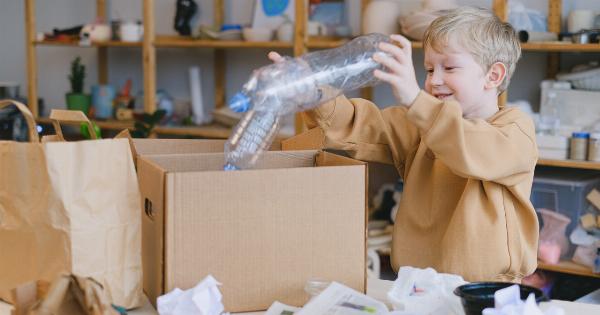Many parents believe that maintaining a clean and tidy home is essential for ensuring the health and well-being of their children.
While it is true that a clean home promotes hygiene and reduces the risk of various illnesses, there is a growing concern among experts that an excessively clean environment can have detrimental effects on children with asthma.
Understanding Asthma
Asthma is a chronic respiratory condition characterized by inflammation and narrowing of the airways, leading to coughing, wheezing, shortness of breath, and chest tightness.
It affects more than 25 million people in the United States alone, with a significant portion being children.
Triggers for asthma attacks can vary from person to person but commonly include allergens such as dust mites, pet dander, pollen, mold, and certain irritants like smoke, strong odors, and air pollution.
While it is crucial to minimize exposure to these triggers, recent research suggests that an excessively clean environment may not be the best solution.
What is the Hygiene Hypothesis?
The hygiene hypothesis is a theory that suggests exposure to certain microorganisms during childhood helps to develop a strong immune system, reducing the risk of allergies and asthma.
This theory challenges the assumption that cleanliness is always beneficial and instead proposes that an overly clean environment may hinder the natural development of the immune system.
Children growing up in extremely clean and sterile homes may have limited exposure to common bacteria, viruses, and other microbes that are crucial for training the immune system.
As a result, their immune response may become overactive, leading to a higher risk of developing allergies and asthma.
The Impact of Cleaning Products
While it is essential to maintain cleanliness to reduce exposure to allergens and irritants, certain cleaning products can actually worsen asthma symptoms in children.
Many traditional cleaning products contain harsh chemicals and fragrances that can irritate the airways and trigger asthma attacks.
Research has shown that the use of cleaning sprays, chlorine bleach, and other household chemicals is associated with an increased risk of asthma symptoms, especially in children.
These chemicals can release volatile organic compounds (VOCs) into the air, which can be inhaled and aggravate respiratory conditions.
It is advisable for parents of asthmatic children to opt for natural cleaning alternatives or products labeled as asthma-friendly. These products are free from harsh chemicals and are less likely to trigger asthma symptoms.
The Role of Indoor Air Quality
Indoor air quality plays a significant role in asthma management. While it is important to maintain a clean home, it is equally crucial to ensure good ventilation and control indoor pollution sources.
Many homes today are well insulated and tightly sealed, preventing fresh air from entering and trapping pollutants indoors.
Poor indoor air quality can increase the concentration of allergens and irritants in the air, exacerbating asthma symptoms.
Common sources of indoor air pollution include tobacco smoke, mold, pet dander, dust mites, and volatile organic compounds (VOCs) released from cleaning products, paints, and furniture.
To improve indoor air quality and reduce asthma triggers, consider the following measures:.
1. Regular Ventilation:
Ensure proper ventilation by opening windows and doors when weather conditions allow. This allows fresh air to circulate and carry away indoor pollutants.
2. Air Purification:
Consider installing air purifiers with high-efficiency particulate air (HEPA) filters to remove allergens and pollutants from the air. These filters can trap microscopic particles, including dust mites, pollen, and pet dander.
3. Dusting and Vacuuming:
Regularly dust and vacuum your home to remove allergens such as dust mites and pet dander. Use a vacuum cleaner equipped with a HEPA filter to prevent the redistribution of particles back into the air.
4. Controlling Humidity:
Keep humidity levels in check by using dehumidifiers in damp areas and employing proper ventilation in bathrooms and kitchens. Maintaining humidity between 30-50% can help prevent the growth of mold and dust mites.
5. Avoiding Smoking Indoors:
Smoke is a potent asthma trigger. Strictly enforce a no-smoking policy indoors and establish designated outdoor smoking areas to protect your child from secondhand smoke.
By implementing these measures, you can create a healthier indoor environment for your child and reduce the risk of asthma exacerbations.
Building a Balanced Environment
While it is clear that excessive cleanliness may have adverse effects on asthma, it is equally important not to overlook the importance of a clean and tidy home.
Maintaining basic cleanliness practices and proper hygiene is crucial for overall health and well-being.
The key lies in finding a balance between cleanliness and exposure to an appropriate amount of microorganisms.
Encouraging your child to play outside, interact with nature, and get dirty (within reason) can help promote a diverse and robust immune system.
Furthermore, ensure that your child’s living environment is free from excessive dust, mold, and other allergens that can worsen asthma symptoms. Regularly change bedding, wash stuffed toys, and keep pet areas clean to reduce exposure to triggers.
Conclusion
A clean home is undoubtedly important for promoting good health and reducing the exposure to asthma triggers. However, it is crucial to find a balance and avoid excessively clean environments that can hinder the development of a strong immune system.
By maintaining a clean but not sterile home, using asthma-friendly cleaning products, and improving indoor air quality, parents can create an environment that minimizes the risk of asthma exacerbations while still allowing their child’s immune system to properly develop and function.





























